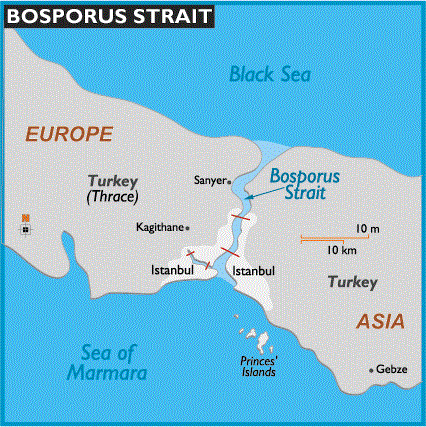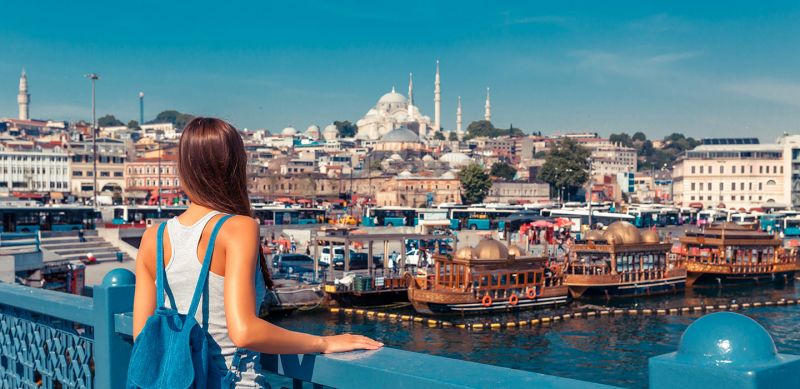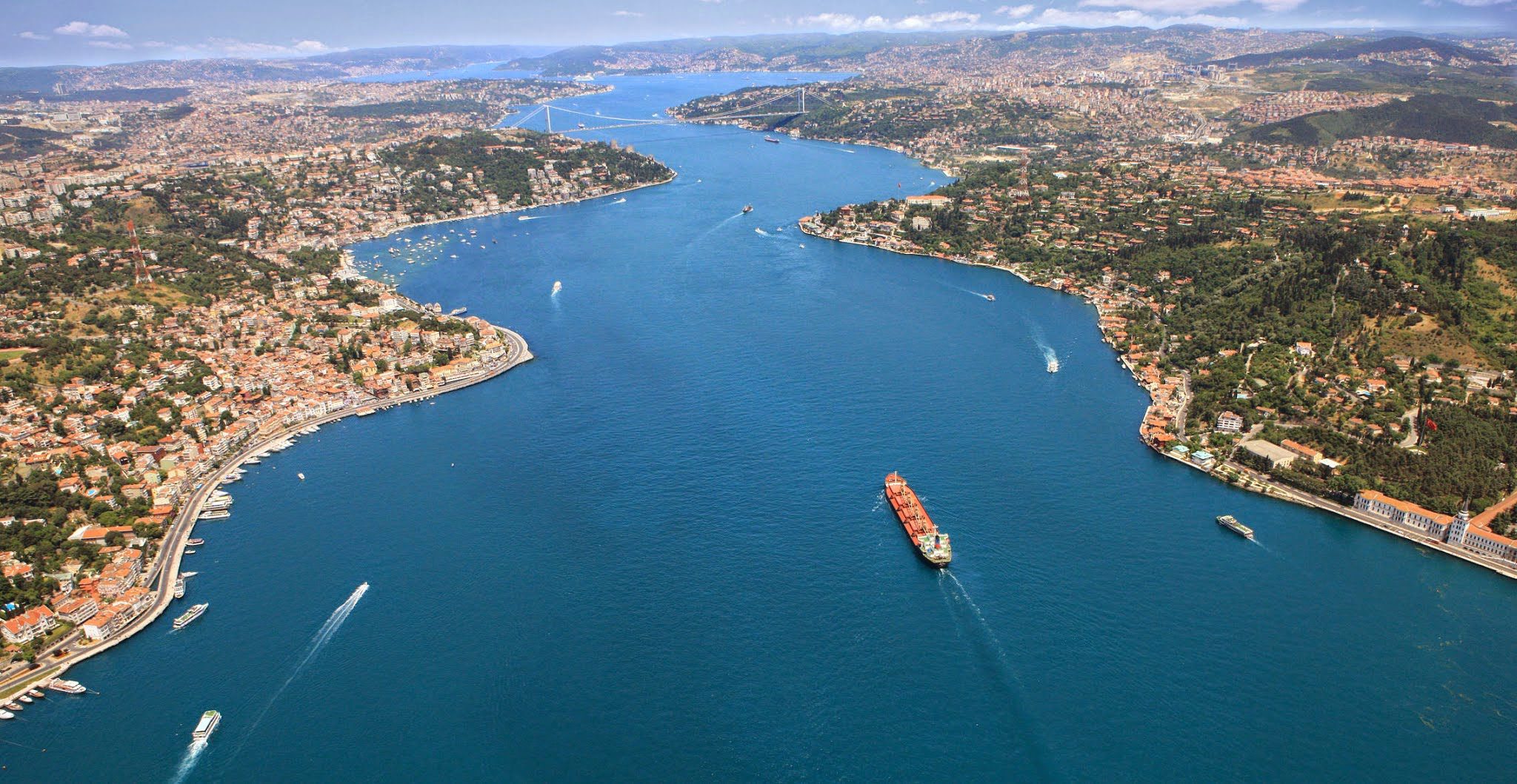The Bosphorus Strait is a stunning waterway that connects two continents and diverse cultures. Situated in Istanbul, Turkey, this Strait holds tremendous historical, geographical, and cultural significance. It has witnessed the rise and fall of empires, shaped trade routes, and continues to be a vital transportation artery. In this blog post, we will explore the beauty and importance of the Bosphorus Strait, its iconic landmarks, and the harmonious blend of cultures it facilitates.
The Bosphorus Strait, also known as Istanbul Strait or Istanbul Bogazi, is a narrow waterway that separates the European and Asian continents. It connects the Black Sea to the Sea of Marmara and acts as a natural border between Europe and Asia. With its strategic location, the Bosphorus has played a crucial role in the history and development of Istanbul, formerly known as Constantinople.
Bosphorus Strait: The Jewel of Istanbul
Istanbul: A City of Contrasts
Istanbul, the largest city in Turkey, is a vibrant metropolis that straddles two continents. With its rich history and cultural heritage, Istanbul offers a unique blend of Eastern and Western influences. The city’s strategic position on the Bosphorus Strait has made it a melting pot of civilizations throughout the ages.


The Bosphorus Strait: A Waterway of Significance
The Bosphorus Strait stretches approximately 31 kilometers (19 miles) and varies in width from 700 meters (2,300 feet) to 3.7 kilometers (2.3 miles). Its deep blue waters flow with a current that connects the Black Sea to the Mediterranean region, serving as a vital waterway for international shipping and trade.
Iconic Landmarks along the Bosphorus
Istanbul’s Bosphorus Strait has many famous landmarks that add to the city’s charm. Among them is the Bosphorus Bridge, which connects the European and Asian sides and is considered a remarkable piece of architecture. Another notable landmark is the Maiden’s Tower, situated on a small islet surrounded by the waters of the Strait and steeped in history.


Palaces, Mansions, and Mosques
Along the Bosphorus shores, you’ll find magnificent palaces, elegant mansions, and majestic mosques that testify to Istanbul’s illustrious past. The Topkapi Palace, once the residence of Ottoman sultans, stands as a testament to the empire’s grandeur. Dolmabahçe Palace, with its opulent interiors and picturesque gardens, showcases the splendor of 19th-century Ottoman architecture. Mosques like the Süleymaniye Mosque and the Hagia Sophia Church-turned-museum highlight the city’s multicultural heritage.
Bosphorus Strait: Connecting Cultures
A Gateway for Trade and Cultural Exchange
The Bosphorus Strait has been a vital trade route for centuries, allowing the exchange of goods, ideas, and cultures between Europe and Asia. It has witnessed the passage of merchants, conquerors, and explorers, leaving their mark on the city’s cultural fabric. The Strait plays a pivotal role in international trade, with thousands of vessels navigating its waters each year.


Bridging East and West
Istanbul’s unique location on the Bosphorus Strait has made it a cultural crossroads where Eastern and Western influences merge harmoniously. The city’s architecture, cuisine, art, and traditions reflect this fusion of cultures. Visitors to Istanbul can immerse themselves in a blend of Ottoman, Byzantine, and contemporary Turkish influences, creating a truly captivating experience.
Cruising the Bosphorus
One of the best ways to experience the beauty of the Strait and its cultural diversity is by taking a cruise along its waters. Bosphorus cruises offer breathtaking views of Istanbul’s skyline, encompassing its historic landmarks and picturesque neighborhoods. From the comfort of a boat, visitors can witness the seamless coexistence of traditional wooden houses, modern skyscrapers, and centuries-old fortifications.
if you want to enjoy a bosphorus cruise we recomend you to take a look at one of our tours.


Conclusion
The Bosphorus Strait is a testament to Istanbul’s historical, geographical, and cultural significance and its position as a bridge between continents. Its enchanting waters have witnessed the ebb and flow of civilizations and continue to serve as a vibrant link between diverse cultures. As you navigate the Bosphorus, you’ll witness the unique blend of East and West that defines Istanbul, making it a truly captivating destination.
Bosphorus Strait: FAQs
What is the significance of the Bosphorus Strait?
The Strait holds immense historical, geographical, and cultural significance. It is a natural border between Europe and Asia. It connects the Black Sea to the Sea of Marmara. It acts as a vital waterway for international shipping and trade.
What are some famous landmarks along the Bosphorus?
The Strait is adorned with iconic landmarks such as the Bosphorus Bridge, Maiden's Tower, Topkapi Palace, Dolmabahçe Palace, and numerous mosques like the Süleymaniye Mosque and the Hagia Sophia Museum.
How does the Bosphorus Strait connect cultures?
The Strait has been a trade and cultural exchange gateway between Europe and Asia. It has facilitated the blending of Eastern and Western influences, shaping Istanbul's architecture, cuisine, art, and traditions.
Can you take a cruise along the Bosphorus Strait?
Yes, Bosphorus cruises offer a fantastic way to experience the beauty of the strait and witness Istanbul's skyline, historic landmarks, and diverse neighborhoods. It's a captivating journey that showcases the seamless coexistence of traditional and modern elements. You can check our tours page and find the best Bosphorus cruise deals.
What makes Istanbul unique?
Istanbul's uniqueness lies in its location on the Strait, connecting two continents and blending diverse cultures. Its rich history, architectural marvels, and cultural fusion create an unparalleled experience for visitors, making it one of the world's most captivating cities.


0 Comment